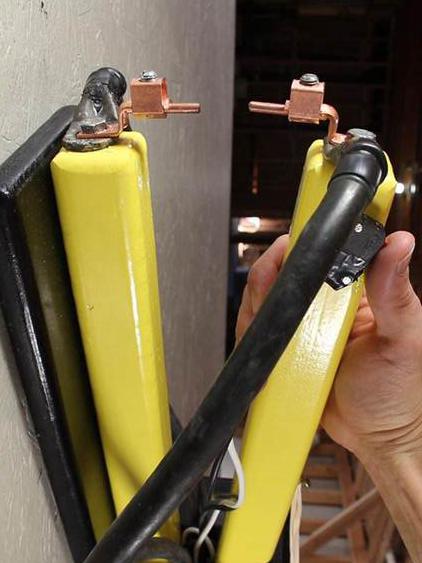Javert
Member level 2
I will need to spot weld 0.5mm Cu wire to 0.5mm brass sheet and 1mm brass wire. Approx. 200 pieces per day, and so I'm thinking about a suitable spot welder or its construction.
I'm interested in this as a reference piece, the price is insane.
Parameters
OUTPUT VOLTAGE RANGE 0.10-5.00 V (0.01 V Intervals)
OUTPUT CURRENT RANGE 10.0-250 A
OUTPUT POWER RANGE 1.0-650 W
WELD TIME (EACH PULSE) 1-500 ms (1 ms intervals)
After 30 seconds of thinking, I came up with this solution.
Please don't laugh, I present it as food for thought for someone who deals with this issue further.
I'll take a 2.7V 3000F capacitor any as this and this , 4pcs (may be 6 or 8) serial and paralle (5,4V battery) connected directly to the copper strip 20x3mm.
I will use a MOSFET as a switching element on the low side, too direct connect to copper strip, any as IXTN660N04T4 40V 660A 0.85mOhm
I charge the capacitors with a voltage of 100mV to 5.4V and then the MCU turns on the MOSFET for the set time and blows for 1 to x00ms.
Is this very stupid?
I'm interested in this as a reference piece, the price is insane.
Parameters
OUTPUT VOLTAGE RANGE 0.10-5.00 V (0.01 V Intervals)
OUTPUT CURRENT RANGE 10.0-250 A
OUTPUT POWER RANGE 1.0-650 W
WELD TIME (EACH PULSE) 1-500 ms (1 ms intervals)
After 30 seconds of thinking, I came up with this solution.
Please don't laugh, I present it as food for thought for someone who deals with this issue further.
I'll take a 2.7V 3000F capacitor any as this and this , 4pcs (may be 6 or 8) serial and paralle (5,4V battery) connected directly to the copper strip 20x3mm.
I will use a MOSFET as a switching element on the low side, too direct connect to copper strip, any as IXTN660N04T4 40V 660A 0.85mOhm
I charge the capacitors with a voltage of 100mV to 5.4V and then the MCU turns on the MOSFET for the set time and blows for 1 to x00ms.
Is this very stupid?

